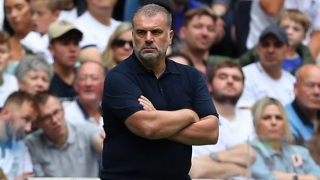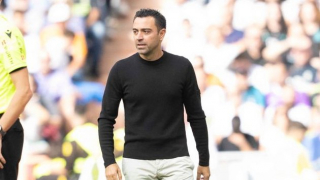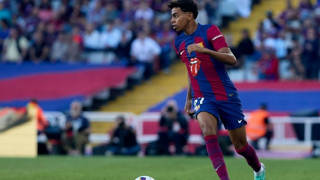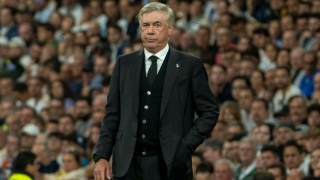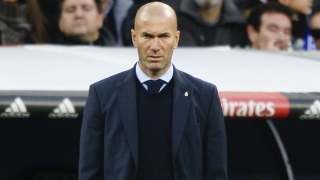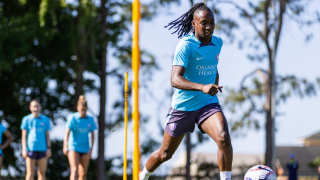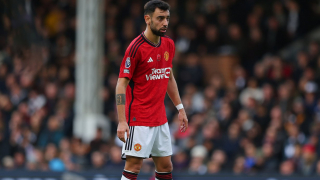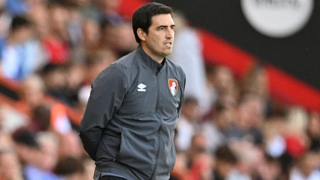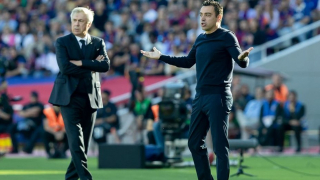Spain hammered Italy 3-0 on their way to topping their 2018 World Cup qualifying group in impressive fashion. They dropped just two points on route to Russia, but more importantly they rediscovered their old style.
Julen Lopetegui replaced Vicente Del Bosque after a disappointing Euro 2016 campaign, and he immediately turned around the team's performances, reinstituting a riskier game made up of possession dominance and intense pressing. However, just days before Spain's World Cup was due to get underway, he was dismissed.
Fernando Hierro will now lead the team throughout this summer's finals, and the effects that the short-notice managerial change will have are difficult to predict. Spain remain one of the main favourites, but with a tough group to negotiate they can't afford any kind of drop-off.
PROBABLE LINE-UP
(4-3-3): De Gea; Carvajal, Pique, Ramos, Alba; Koke, Busquets, Iniesta; Silva, Rodrigo, Isco
Spain play exactly as you'd expect Spain to play, though Lopetegui did bring about some small but crucial changes. While Del Bosque preferred to use two deep-lying playmakers in Busquets and Xabi Alonso, Lopetegui's midfield setup was more like that deployed by the late Luis Aragones at Euro 2008, with Busquets joined by one of Koke and Andres Iniesta.
There is talk that the formation is more of a 4-2-3-1 than the old 4-3-3, though such talk is almost irrelevant considering the fluidity of the midfield – Iniesta, Koke, David Silva and Isco rotate positions so frequently that it is almost impossible to keep track of and describe with mere numbers.
What is clear is that this Spain are as aggressive without the ball as they've ever been, and they also take more risks in possession. Gone is the slow, methodical, death-by-a-thousand-passes approach; in is a fresher, faster and more direct style.
The only real personnel uncertainty regards the striker role. Diego Costa brings brutish physicality, while Iago Aspas brings creativity and clever runs. However, Hierro may settle on Rodrigo Moreno, who offers a nice combination of mobility, strength and intelligence.
2018'S MOST AGGRESSIVE DEFENCE
Many teams at this summer's World Cup are going to defend in a similar way: their defensive approach will be man-oriented, and they will press around the halfway line. Spain, however, will utilise a distinctly different strategy.
Firstly, they will use an aggressive attacking press. This involves applying pressure to the opposition high up the pitch with the intention of forcing errors as close to the goal as possible. Secondly, they will press in a ball-oriented manner, meaning they look to pressure the ball-player while also cutting off his nearby passing lanes.
An example of Spain's pressing is seen in the graphic below, taken from their friendly with Germany. Here, Jordi Alba moves up to press the opposition ball-player. At the same time, Isco and Iniesta shift their position to stand in front of two nearby Germany players, removing them as passing options. Silva and Thiago offer support from behind and move up should Spain force Germany back, while on the far side Rodrigo forms a cover shadow on the left-sided German centre-back, again removing him as a viable passing option.
Spain's high pressing is supported by a similarly high and aggressive defensive line. The back four are constantly looking to push up, squeezing the space available to opposition forwards, reducing the space available between the lines and looking to set an offside trap for any through passes or balls over the top.
When their high press is bypassed, Spain settle into a medium block with good coverage. An example of this is seen below in their 6-1 win over Argentina. Their opponents pass to the right touchline, so Spain's midfielders shift position with Isco moving out to press the ball-player and his teammates covering diagonally behind. This prevents any simple diagonal pass inward from the Argentina full-back, while Iniesta can also be seen moving to cut off the passing lane between the full-back and the nearby centre-back.
Defensively, Spain are probably going to be the most proactive and assertive team at the 2018 World Cup, however they are not impenetrable. Argentina showed that teams with good build-up can draw them in and create space behind, while Switzerland used a similar ploy to exploit Spain's high ball-oriented pressing, exchanging short passes in one area before switching play with long balls to the less congested far side.
PACE AND POSSESSION
The quality and intensity of Spain's pressing only helps them to regain possession. And, once they have the ball, it's extremely difficult to get it back off them. The key to their attacking game, however, is not simply retention of possession; rather, they pass at a high pace, making it tough for opponents to get close enough to them to force an error.
They are able to maintain such a high tempo due to the exceptional control and touch of their players. With a wealth of ball-playing defenders and classy playmaking midfielders, Spain's individuals have no problem receiving a fast ball to feet, even when under pressure.
The speed of their possession is combined with a dynamic attacking structure that sees players rotate positions, moving laterally and vertically to create ways of progressing possession. An example of this fluidity and its benefits is seen below. Pique, circled, plays a forward pass to Rodrigo, who peels off the frontline to receive. Silva immediately runs infield to receive the layoff from Rodrigo. This is an effective combination, though it is not the only one available – Pique could just as easily passed to Silva, with Isco moving up to receive the layoff from the former Barcelona man.
Having players positioned in this way, on different levels, enables Spain to frequently use 1-2s and layoffs to play through the opponent. They also make good use of third man runs, where two players will exchange passes with the intention of creating room for a pass to a third man, who carries the ball forward.
The wingers in Spain's system aren't really wingers – both Silva and Isco vacate their wide positions constantly in order to improve the team's attacking play. Both can often be seen drifting infield or deep, varying their position and, at times, swapping wings. By dropping deep in the inside channel – between the opposition's central and wide players – they ensure they are not easily marked. Once in a deep position, both improve the quality of Spain's build-up and potentially can create a numerical overload with their deeper teammates.
Isco is particularly important in attack through his inward dribbling, as shown in the below graphic. Here, he drives in from the left wing with the ball at feet. In doing so he entices three Tunisia midfielders towards him, as he moves from one opposing marker's zone to another. By attracting their attention, he acts as a diversion for runs behind the opposition midfield. Below, Iniesta (circled) takes advantage of this to find space and offer a penetrative passing option.
Whenever they do lose possession, Spain employ intense counter-pressing in defensive transition so as to win the ball back as quickly and as high up the pitch as possible. From there they can instigate a dangerous quick counter-attack from the middle or attacking third, something that led to several of their goals in the thrashing of Argentina earlier this year.
Spain may no longer have Lopetegui in charge, but they are unlikely to collectively forget the tactics that got them to the World Cup. There is even an argument to be made that the players will be even more motivated than before simply to prove their success is not dependent on one coach. Assuming they continue to play with the same aggression without the ball and the same dynamism and speed with it, they can go far at this summer's World Cup.


